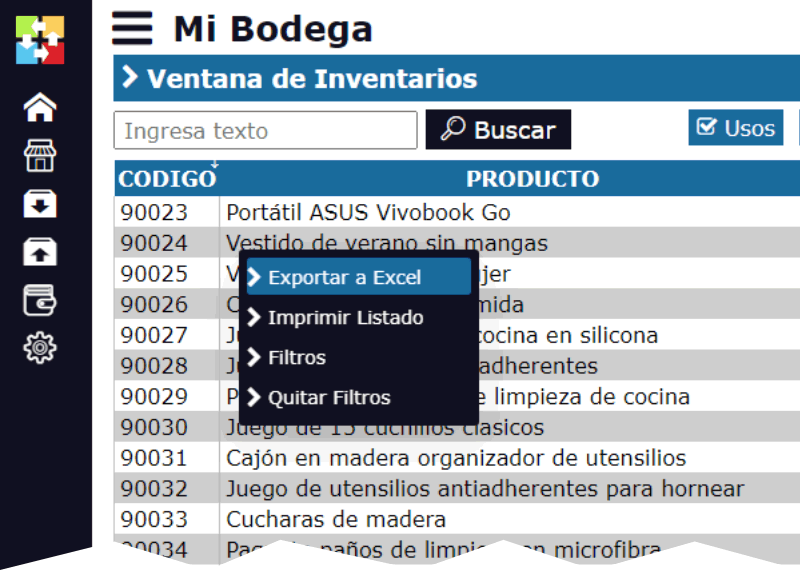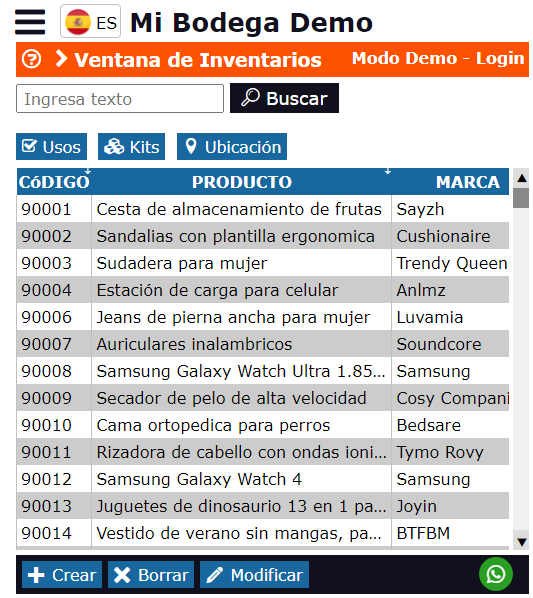Real-time inventories: Benefits and how to implement them
In today's business environment, the ability to manage inventories in real-time has become a crucial competitive advantage. Real-time inventories allow companies to immediately know the status of their stock, facilitating informed decision-making, improving operational efficiency, and optimizing customer satisfaction. In this article, we will explore the benefits of implementing a real-time inventory system and how to achieve it effectively.

1. Benefits of real-time inventories
a. Informed decision-making:
With a real-time inventory system, stock data is automatically updated with each transaction, whether it's a sale, a return, or a new stock entry. This allows managers and purchasing teams to make decisions based on accurate and up-to-date data, avoiding overstocking or stock shortages.
b. Reduction of operational costs:
By optimizing inventory levels and eliminating the need for frequent physical audits, real-time inventories can significantly reduce operational costs. Additionally, it decreases the risk of obsolescence and losses due to expiration, as the system alerts on slow-moving or soon-to-expire products.
c. Improved customer satisfaction:
With precise and updated inventory control, companies can ensure the constant availability of products, reducing wait times and avoiding lost sales. This translates into higher customer satisfaction and improved loyalty.
d. Integration with e-commerce platforms:
Real-time inventory systems easily integrate with e-commerce platforms, automatically updating available stock in the online store and avoiding errors like selling out-of-stock products. This improves the customer shopping experience and strengthens the brand's reputation.
e. Supply chain improvement:
Real-time inventory tracking also facilitates supply chain management, enabling more precise planning and better relationships with suppliers. This ensures products are available at the right time and place, optimizing logistics and distribution.
2. How to implement real-time inventories
a. Selecting the right software:
The first step in implementing real-time inventories is selecting software that offers this functionality comprehensively. Inventarios1A is a complete solution that allows managing real-time inventories, integrating with point-of-sale systems, e-commerce, and more. Its ability to automatically record and update every inventory movement makes it an ideal option for businesses of any size.
b. Process automation:
Automation is key to achieving real-time inventory management. This includes integrating barcode scanners or mobile devices that allow immediate recording of product entries and exits, eliminating the need for manual updates and reducing the margin of error.
c. Staff training:
For a real-time inventory system to work correctly, it is essential that all staff are trained in its use. This includes the correct use of data entry devices and understanding the importance of keeping the system updated with every transaction.
d. Monitoring and data analysis:
Implementing a real-time inventory system also requires establishing continuous data monitoring and analysis processes. This allows identifying trends, optimizing inventory management, and making proactive decisions to improve operational efficiency.
e. Integration with other systems:
A real-time inventory system must integrate with other business solutions, such as financial management software, e-commerce platforms, and point-of-sale systems. Inventarios1A offers seamless integration with various platforms, providing a unified and coherent view of all business operations.
Implementing a real-time inventory system can radically transform how a company manages its stock. From improving decision-making to optimizing customer satisfaction, the benefits are numerous and tangible. With Inventarios1A, your business can take advantage of all these benefits, ensuring efficient, accurate, and real-time inventory management that adapts to the needs of an ever-evolving market.





